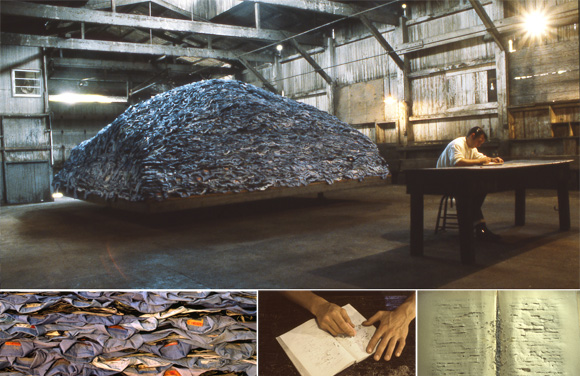Poem & Voice: Jorge Luis Borges
Director / Editor / Colorist : Neels CASTILLON
Director / Editor / Colorist : Neels CASTILLON
Mirar el río hecho de tiempo y agua
y recordar que el tiempo es otro río,
saber que nos perdemos como el río
y que los rostros pasan como el agua.
Sentir que la vigilia es otro sueño
que sueña no soñar y que la muerte
que teme nuestra carne es esa muerte
de cada noche, que se llama sueño.
Ver en el día o en el año un símbolo
de los días del hombre y de sus años,
convertir el ultraje de los años
en una música, un rumor y un símbolo,
ver en la muerte el sueño, en el ocaso
un triste oro, tal es la poesía
que es inmortal y pobre. La poesía
vuelve como la aurora y el ocaso.
A veces en las tardes una cara
nos mira desde el fondo de un espejo;
el arte debe ser como ese espejo
que nos revela nuestra propia cara.
Cuentan que Ulises, harto de prodigios,
lloró de amor al divisar su Itaca
verde y humilde. El arte es esa Itaca
de verde eternidad, no de prodigios.
También es como el río interminable
que pasa y queda y es cristal de un mismo
Heráclito inconstante, que es el mismo
y es otro, como el río interminable.
ENG.
The Art of Poetry
To gaze at a river made of time and water
And remember Time is another river.
To know we stray like a river
and our faces vanish like water.
To feel that waking is another dream
that dreams of not dreaming and that the death
we fear in our bones is the death
that every night we call a dream.
To see in every day and year a symbol
of all the days of man and his years,
and convert the outrage of the years
into music, a sound, and a symbol.
To see in death a dream, in the sunset
a golden sadness--such is poetry,
humble and immortal, poetry,
returning, like dawn and the sunset.
Sometimes in the evening there's a face
that sees us from the depths of a mirror.
Art must be that sort of mirror,
disclosing to each of us his face.
They say Ulysses, wearied of wonders,
wept with love on seeing Ithaca,
humble and green. Art is that Ithaca,
a green eternity, not wonders.
Art is endless like a river flowing,
passing, yet remaining, a mirror to the same
inconstant Heraclitus, who is the same
and yet another, like the river flowing.








































.jpg)













